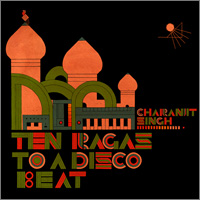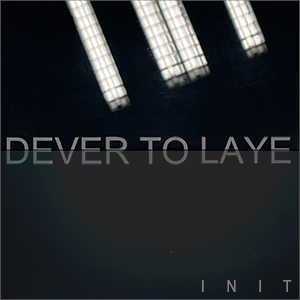
(May 2010) Every once and a while a record comes out that creates a bit of a stir. The latest in this chain comes from an unlikely source, Mumbai. In 1982 Charanjit Singh, with a 303, an 808, a Jupitar 6 made his Synthesizing – Ten Ragas to a Disco Beat. It’s not as much the Mumbai source of this LP that has sparked such interest, it is the equipment and year of its inception. Most will recognize the TB303 and TR808 as the building blocks of the house music movement, but in 1982 house music wasn’t really alive. By ’83 groups like Z-Factor were pioneering house, but Singh and Ten Ragas was already out. So, is this LP the first house record?
In an interview a few years back Tony Humphries summed up the house sound in one word, “mechanical.” It may be the perfect synopsis for what is considered house, but it depends what house is being defined as. The likes of Adonis and Armando did have a mechanical aspect, looping samples and an unceasing 808 beat. On the other hand, Phuture had perhaps a less automatic note. With this, earlier house tracks grew from disco. Singh’s tracks have this disco aspect, but not as much as the album’s title might let one believe. As the appellation does suggest Singh wrote this music within the Indian classical of the Raga a series of five or more musical notes upon which a melody is made. What the title doesn’t suggest is the acid lines under which the ragas are made. The ragas are created with the quintessential acid machine, the 303, and it is the only thing that locks the record to any aspects of house. The ragas are an amazingly early, and finally unearthed, examples of what these fledgling electronic machines are capable of. The 808 and 303 have, in some respects been pigeonholed into being “house” machines. Singh is snubs this typecasting. The ten tracks do not have much to differentiate between them, some are faster, some are slower, but they work along the same raga formula. This acidic tracks are not like those of early Rephlex or Djak up Beat records, they were not created for clubs but were made to create Indian influenced music with new equipment. The tracks twist and float on tweaks and swirls of 303 lines, pushing forward under 808 beats with the Jupitar 6 adding a bed of bass. Some of the works have a playfulness to them, almost like Ceephax Acid Crew’s noodling with his big brother’s vintage synths. The ragas are melodic whirling pieces, tracks that were not hampered by genres because there were no genres as the critic’s pen hadn’t had time to invite them yet.
Singh’s LP is not a house record, but that’s not a problem. What Synthesizing – Ten Ragas to a Disco Beat is is a piece of electronic music history. For years this record has laid in the forgotten archives. Singh’s LP is one of the first records to utilize equipment that would later create the house, acid and techno genres and define nearly all aspects of electronic music. But, it is not the issue about Singh being the first to seal these sounds on a 12″s of vinyl that makes this LP so intriguing, it is that no-one else went down similar lines to Singh afterwards. Most artists, when getting their hands on these prized, and expensive, analogue boxes, sought to make music for clubs and inevitably a pseudo movement. Singh made his sounds completely separate to this, there weren’t the likes of a Derrick May or Frankie Knuckles to work with in Mumbai. Perhaps it is this musical solitude, that is from artists who would embrace the same machines, that gives Synthesizing… such a uniqueness, despite surfacing more than twenty five years ago. Singh’s remoteness, and non-Western influences, give the LP a tone and style that haven’t been replicated; and that is not something that can be easily said today for any electronic record.
Synthesizing – Ten Ragas to a Disco Beat is out now on Bombay Connection. [Listen | Purchase]

















![ALEPH :: REFRACTOR EP (Renraku) — [concise]](https://igloomag.com/wp/wp-content/uploads/2025/03/alpeh-refractor_feat-75x75.jpg)
![ADJ :: Invasion Of The Compliant (Strange But Dance Music) — [concise]](https://igloomag.com/wp/wp-content/uploads/2025/03/adj-invasion-of-the-compliant_feat-75x75.jpg)





